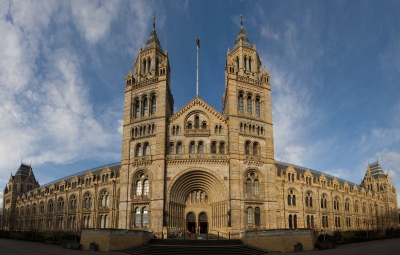The Piltdown Man was a paleoanthropological fraud in which bone fragments were presented as the fossilised remains of a previously unknown early human. Although there were doubts about its authenticity virtually from the beginning, the remains were still broadly accepted for many years, and the falsity of the hoax was only definitively demonstrated in 1953. An extensive scientific review in 2016 established that amateur archaeologist Charles Dawson was responsible for the fraudulent evidence.In 1912, Charles Dawson claimed that he had discovered the "missing link" between ape and man. In February 1912, Dawson contacted Arthur Smith Woodward, Keeper of Geology at the Natural History Museum, stating he had found a section of a human-like skull in Pleistocene gravel beds near Piltdown, East Sussex. That summer, Dawson and Smith Woodward purportedly discovered more bones and artifacts at the site, which they connected to the same individual. These finds included a jawbone, more skull fragments, a set of teeth, and primitive tools.
Smith Woodward reconstructed the skull fragments and hypothesised that they belonged to a human ancestor from 500,000 years ago. The discovery was announced at a Geological Society meeting and was given the Latin name Eoanthropus dawsoni ("Dawson's dawn-man"). The questionable significance of the assemblage remained the subject of considerable controversy until it was conclusively exposed in 1953 as a forgery. It was found to have consisted of the altered mandible and some teeth of an orangutan deliberately combined with the cranium of a fully developed, though small-brained, modern human.
The Piltdown hoax is prominent for two reasons: the attention it generated around the subject of human evolution, and the length of time, 41 years, that elapsed from its alleged initial discovery to its definitive exposure as a composite forgery.
The Natural History Museum in London is a natural history museum that exhibits a vast range of specimens from various segments of natural history. It is one of three major museums on Exhibition Road in South Kensington, the others being the Science Museum and the Victoria and Albert Museum. The Natural History Museum's main frontage, however, is on Cromwell Road.
The museum is home to life and earth science specimens comprising some 80 million items within five main collections: botany, entomology, mineralogy, palaeontology and zoology. The museum is a centre of research specialising in taxonomy, identification and conservation. Given the age of the institution, many of the collections have great historical as well as scientific value, such as specimens collected by Charles Darwin. The museum is particularly famous for its exhibition of dinosaur skeletons and ornate architecture—sometimes dubbed a cathedral of nature—both exemplified by the large Diplodocus cast that dominated the vaulted central hall before it was replaced in 2017 with the skeleton of a blue whale hanging from the ceiling. The Natural History Museum Library contains extensive books, journals, manuscripts, and artwork collections linked to the work and research of the scientific departments; access to the library is by appointment only. The museum is recognised as the pre-eminent centre of natural history and research of related fields in the world.
Although commonly referred to as the Natural History Museum, it was officially known as British Museum (Natural History) until 1992, despite legal separation from the British Museum itself in 1963. Originating from collections within the British Museum, the landmark Alfred Waterhouse building was built and opened by 1881 and later incorporated the Geological Museum. The Darwin Centre is a more recent addition, partly designed as a modern facility for storing the valuable collections.
Like other publicly funded national museums in the United Kingdom, the Natural History Museum does not charge an admission fee.
The museum is an exempt charity and a non-departmental public body sponsored by the Department for Digital, Culture, Media and Sport. Catherine, Duchess of Cambridge, is a patron of the museum. There are approximately 850 staff at the museum. The two largest strategic groups are the Public Engagement Group and Science Group.

1953Nov, 21
The Natural History Museum, London announces that the "Piltdown Man" skull, initially believed to be one of the most important fossilized hominid skulls ever found, is a hoax.
Choose Another Date
Events on 1953
- 28Feb
Francis Crick
James Watson and Francis Crick announce to friends that they have determined the chemical structure of DNA; the formal announcement takes place on April 25 following publication in April's Nature (pub. April 2). - 6Mar
Joseph Stalin
Georgy Malenkov succeeds Joseph Stalin as Premier of the Soviet Union and First Secretary of the Communist Party of the Soviet Union. - 8Apr
Jomo Kenyatta
Mau Mau leader Jomo Kenyatta is convicted by British Kenya's rulers. - 19Aug
1953 Iranian coup d'état
Cold War: The CIA and MI6 help to overthrow the government of Mohammad Mosaddegh in Iran and reinstate the Shah Mohammad Reza Pahlavi. - 30Oct
Dwight D. Eisenhower
Cold War: U.S. President Dwight D. Eisenhower formally approves the top secret document National Security Council Paper No. 162/2, which states that the United States' arsenal of nuclear weapons must be maintained and expanded to counter the communist threat.

 English
English  español
español  français
français  português
português  русский
русский  العربية
العربية  简体中文
简体中文 